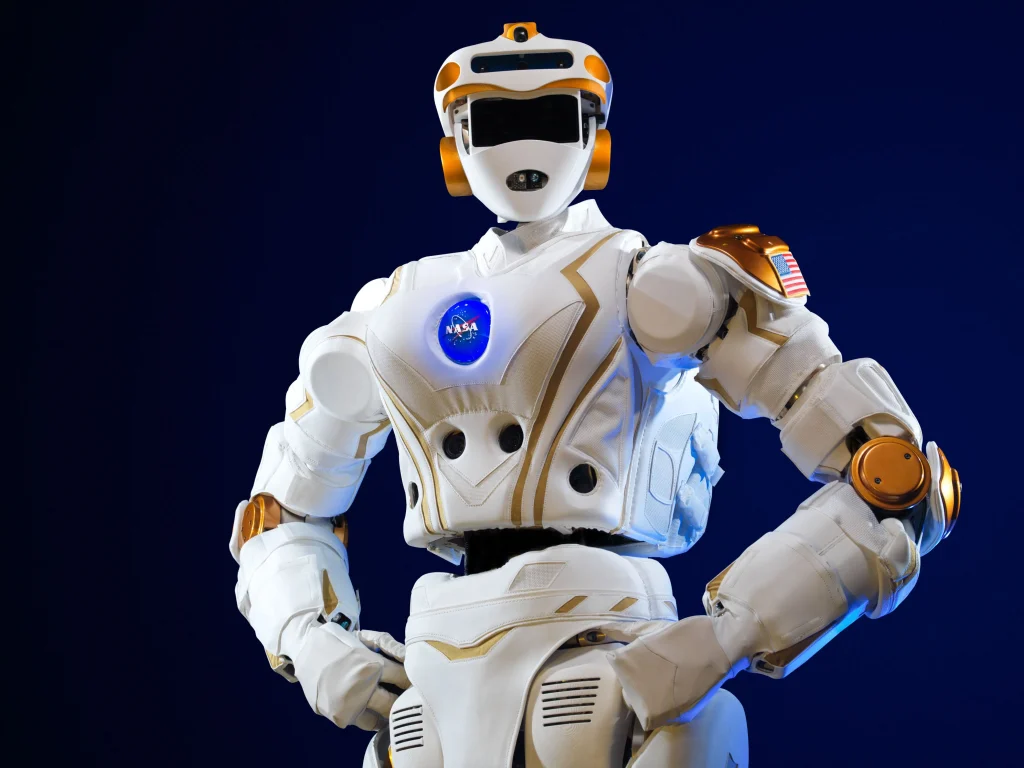In recent years, humanoid robots have emerged as groundbreaking innovations, blending advanced artificial intelligence with human-like capabilities. Among the most notable is XPENG’s humanoid robot, Iron, a marvel of engineering that stands at 5 feet, 8 inches tall and weighs 154 pounds. Equipped with eagle-eye vision and the ability to perform complex tasks, this robot with advanced AI technology is redefining its use in both the workplace and at home. Currently employed in manufacturing settings, humanoid robots like Iron demonstrate significant potential as AI-powered personal assistants, ready to tackle various responsibilities. As we witness these humanoid robots at work, the question arises: how will they transform our daily lives and interactions with technology beyond the factory walls?
As the world embraces the potential of robotic automation, terms like anthropomorphic machines and robotic helpers are becoming increasingly relevant. The XPENG humanoid, known as Iron, exemplifies this shift, boasting advanced artificial intelligence capabilities that mirror human actions. This innovative robot not only showcases remarkable precision and agility, but its design facilitates an array of applications from industrial tasks to personal assistance. With a vision system that grants it an expansive awareness of its surroundings, this sophisticated device signals a future where robotic companions enhance our daily activities and redefine human-robot relations. As such, the evolution of humanoid robots presents exciting possibilities in various sectors, indicating a significant leap forward in our technological landscape.
The Rise of Humanoid Robots
Humanoid robots are becoming an integral part of modern life, merging human-like features and AI capabilities to assist in everything from manufacturing to personal care. XPENG’s latest model, Iron, exemplifies this trend with its sophisticated design that incorporates advanced artificial intelligence, enabling it to navigate complex environments and complete tasks that were once thought to be the exclusive domain of humans. With its ability to replicate human movement, Iron stands out in the growing market of humanoid robots, poised to become a critical asset in various sectors.
As industries redefine efficiency, humanoid robots are stepping in to handle repetitive or hazardous tasks that can pose risks to human workers. With the adaptability afforded by XPENG’s reinforcement learning techniques, Iron is designed to learn and grow in its capabilities. This approach not only enhances workforce productivity but also allows for innovative applications such as customer service, home assistance, and administrative functions, showcasing the potentially transformative role of these robots in everyday scenarios.
Frequently Asked Questions
What is the role of humanoid robots like XPENG Iron in modern workplaces?
Humanoid robots like XPENG Iron are reshaping modern workplaces by performing tasks such as assembling electric vehicles with exceptional precision. They combine advanced artificial intelligence and human-like movement, enabling seamless interaction and enhancing productivity. As they evolve, these robots are expected to take on administrative functions, customer service, and even household chores, making them versatile tools for various environments.
How does the advanced artificial intelligence in humanoid robots enhance their functionality?
The advanced artificial intelligence in humanoid robots like XPENG Iron allows them to process complex tasks by using a powerful Turing AI chip, capable of managing 3,000 trillion operations per second. This allows the robot to adapt to dynamic environments, think critically, and respond intelligently, significantly enhancing their functionality in both work and home settings.
What features make XPENG Iron stand out among other humanoid robots?
XPENG Iron stands out due to its advanced features such as 60 joints providing 200 degrees of freedom for natural movement, and a vision system with a 720-degree field of view, akin to eagle-eye vision. These capabilities, combined with its powerful AI and human-like dexterity, enable Iron to perform delicate tasks, thus positioning it as a versatile assistant across various applications.
Can humanoid robots like Iron serve as personal assistants in daily life?
Yes, humanoid robots like XPENG Iron are designed to serve as AI-powered personal assistants. Their advanced capabilities allow them to assist in offices, retail environments, and homes, performing various tasks from administrative duties to household chores. As technology advances, we can expect more accessible versions for everyday consumers.
What is the significance of Iron’s mobility system in its performance?
Iron’s mobility system, developed using reinforcement learning and large AI models, allows it to move smoothly and adapt to different tasks with ease. This sophisticated mobility system is crucial for performing complex operations and ensures that Iron can operate effectively in both industrial settings and home environments, making it a highly versatile humanoid robot.
How does XPENG plan to make humanoid robots like Iron more accessible to the general public?
XPENG plans to create more affordable versions of humanoid robots like Iron for the general public as part of its broader strategy. Currently priced around $150,000 and targeted mainly at businesses, the goal is to develop models that integrate advanced AI features while remaining economically viable for everyday consumers, thus expanding their usage in homes.
What is the vision for humanoid robots at work according to XPENG?
XPENG envisions humanoid robots at work to lead a transformation in how tasks are performed across industries. With designs like Iron, they intend to integrate advanced AI and robotics to enhance both efficiency and human-robot collaboration. This vision aligns with XPENG’s strategy to create a diverse ecosystem that includes smart vehicles and flying machines, enhancing the interconnectedness of technology in everyday life.
| Feature | Description |
|---|---|
| Height | 5 feet 8 inches |
| Weight | 154 pounds |
| AI Capability | Turing AI chip with 3,000 trillion ops/sec and 30 billion parameters |
| Mobility | 60 joints and 200 degrees of freedom for human-like movement |
| Vision System | 720-degree field of view with advanced AI cameras |
| Applications | Factory assembly, future tasks in offices, retail, and homes |
| Target Market | Currently $150,000, aimed at businesses |
Summary
The humanoid robot, Iron, developed by XPENG, represents a groundbreaking advancement in robotics and AI technology. With its human-like movement and exceptional vision, Iron is not only revolutionizing factory work but also paving the way for its integration into homes and offices. As Iron continues to evolve, we can expect it to assist with various tasks, ultimately enhancing daily life and redefining the role of humanoid robots in our society. The future looks promising as we embrace this new era of human-robot collaboration.

